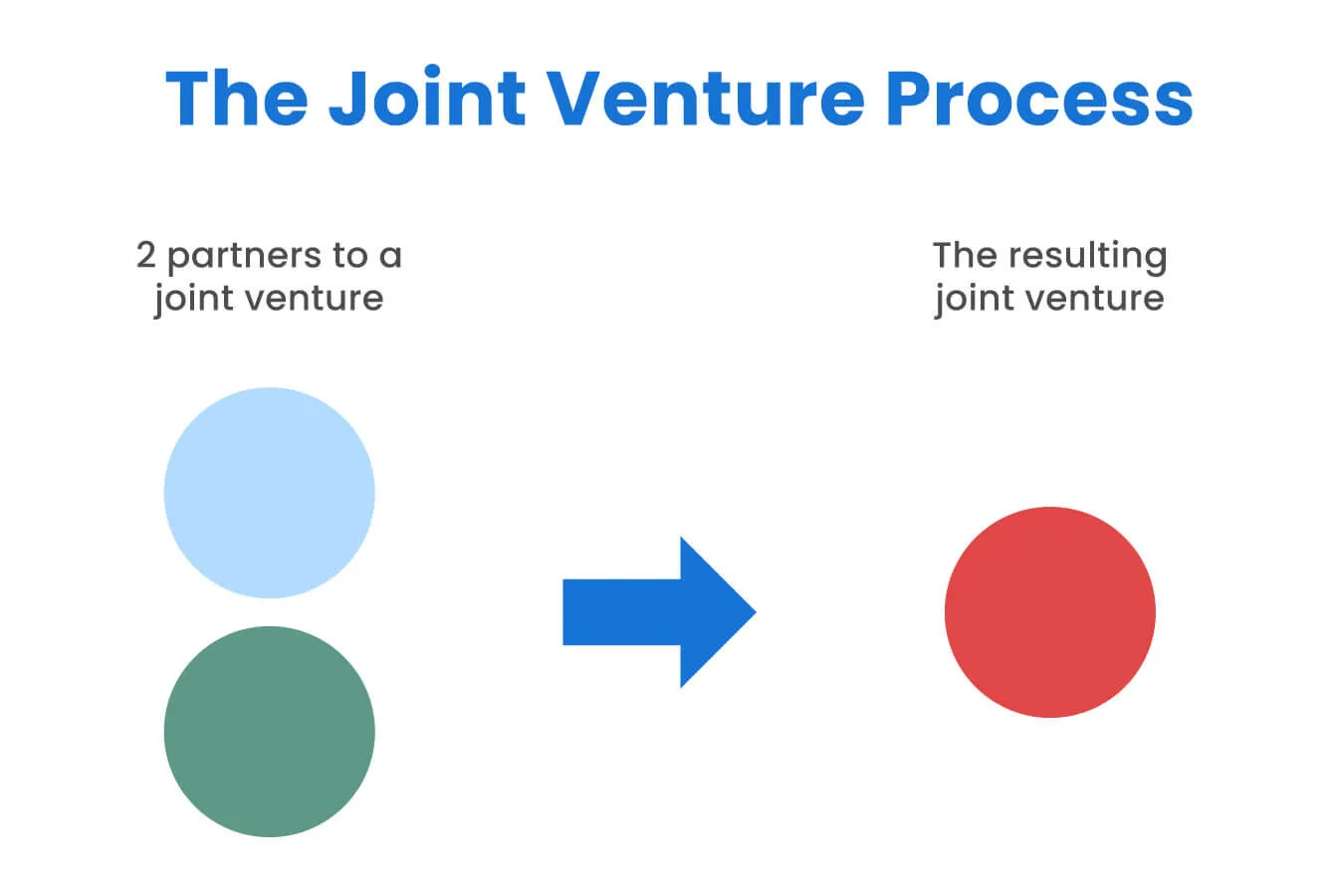Joint ventures, mergers, and acquisitions are the most common restructuring strategies often spoken of in the same breath; however, they are not the same.
These forms of external expansion involve corporate combinations, businesses buying other businesses, or taking over with the sole objective of growing.
DealRoom has helped dozens of companies organize their M&A process and in this article, we explain the differences or similarities between joint ventures, mergers, and acquisitions.
Mergers and Acquisition (M&A)
A merger occurs when two businesses, mostly of equal size, combine into a single company and cease to operate as separate entities. It, however, requires both corporations to give up their ownership in order for a new company to exist and new shares to be issued.

A perfect example of a merger is the 1998 deal between Exxon and Mobil, which were some of the largest oil producers in the US. Other top mergers include Vodafone and Mannesmann and America Online and TimeWarner.
On the other hand, acquisition or takeover is a business strategy in which one company controls another.
Top tech giant Microsoft has recently been on an acquisition spree, taking over Nuance Communication for up to $19billion in 2021. Additionally, Alphabet has closed up to 22 deals in the last decade.

Big players in the insurance industry are expected to enter into mergers and acquisitions to increase leads for medicare advantage, expand their entities, and gain competitive advantage.
For instance, in 2021, Zing Health Enterprises acquired Lasso Healthcare Insurance Co. to expand Medicare Advantage plans around the country.
Read more about mergers and acquisitions in this guide.
Joint Venture
A joint venture is formed through a legal partnership between companies. It can occur due to various reasons, for example, acquiring more resources beyond what each business has. Also, it can be a strategic decision that will benefit both companies.
In this partnership, the two businesses can continue to exist separately in financial control, assets, management, and operations.
However, a new separate entity or division may be created if the boards of each company pass a resolution.

A modern example of a joint venture is the Caradigm joint venture between General Electric (GE) Healthcare and top tech companyMicrosoft Corporation in 2011. The project's objective was to combineGE health technologies with Microsoft's intelligence product.
Another case study of a joint venture is that of VOLVO and UBER. Both companies' objective was to create driverless vehicles in a contract worth $350 million.
Read more about strategic joint ventures in this guide.
Differences Between Joint Venture, Mergers and Acquisitions Explained
The main reasons for a merger and acquisition are similar. Usually, the companies' combined operations through advanced technology, marketshare, and economies of scale are important aspects.
The goal of a merger and acquisition is to form a new business that is more efficient than previous companies.
These business undertakings provide financial benefits to the companies, and shareholders can get more shares after completing the transaction.
- The goal of a merger and acquisition is to form a new business that is more efficient than previous companies. These business undertakings provide financial benefits to the companies, and shareholders can get more shares after completing the transaction.
- A joint venture requires less commitment since the companies continue to exist as independent entities. On the other hand, mergers and acquisitions require more commitment to the long-term strategy.
- Mergers and acquisitions are ideal where the two companies overlap and do most of their operations as independent entities. By contrast, there are no overlaps in a joint venture, but there is a similarity in a specific area in which both companies can work together.
- Joint ventures are created on a short-term basis and mostly for short projects. On the contrary, mergers and acquisitions are long-term strategies.
- Whereas mergers and acquisitions have no time limit, a joint venture partnership usually has a defined time horizon.
For instance, when Microsoft and NBC had a joint venture, a new entity, MSNBC, was created. Unfortunately, the joint venture collapsed after 16 years.
However, the parent companies, Microsoft and NBC, remained.
Case for Joint Venture, Mergers, and Acquisitions
• Expertise, technical know-how, and better customer insights enable strategic decision-making
• Improved customer experience
• Exposure to more markets
• Ability to serve current markets
• To attract top talent in the industry
• Launch of new state-of-the-art technology
• To gain a competitive edge in the market
• Streamline operations and distribution network
• Lower cost of operations
• Greater bargaining power
• Greater purchasing power
• Low overhead costs
• Achieve economies of scale
Case Against Joint Venture, Mergers, and Acquisitions
• Employee distress leading to turnover
• Loss of jobs
• Disruptions in organizations' culture and management styles
• Costly in the short-term
Conclusion
From the discussion, it's evident that the ideas behind each approach may be different, but the benefits are similar.
The strategic motives of each approach include gaining new markets, navigating business risks, enjoying a tax advantage, and increasing the companies sizes.
In a merger and acquisition, the entire assets, accounts, debts, loans, equity, rental properties, and technical systems are absorbed by the new company. With a merger, the companies remain as independent entities.




.webp)















.png)
.webp)



.webp)
.webp)
.webp)





.png)
.png)
.png)
.svg)

.svg)
.png)
